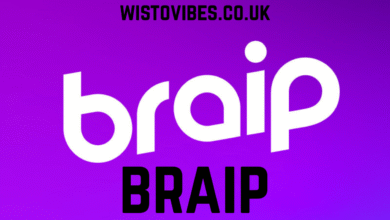In a world where physical and mental perfection is often glorified, there exists a remarkable league of individuals who have shattered stereotypes, risen above challenges, and proven that disabilities do not define one’s potential. The stories of those who are famous with disabilities stand as testaments to human resilience, creativity, and determination. These trailblazers have not only excelled in their respective fields but have also redefined society’s understanding of ability.
In this article, we will journey through the lives and legacies of some of the most famous with disabilities, across various fields—arts, science, politics, sports, and entertainment. These individuals didn’t just survive their conditions—they thrived despite them and, in many cases, because of them.
Stephen Hawking – Genius Beyond Limits
One of the most recognized scientists in history, Stephen Hawking is a monumental example of someone who was famous with disabilities and defied all odds. Diagnosed with amyotrophic lateral sclerosis (ALS) at the age of 21, Hawking was given only a few years to live. Despite the progressive neurodegenerative disease that eventually left him paralyzed, he went on to change the world of theoretical physics.
Hawking authored the groundbreaking book A Brief History of Time, contributed heavily to black hole theories, and continued to work, lecture, and inspire through the use of a speech-generating device. His condition never limited his intellect, and he became one of the greatest minds of the 20th and 21st centuries—making him undeniably one of the most famous with disabilities.
Helen Keller – Voice of the Silent and Sightless
When speaking of individuals famous with disabilities, Helen Keller is a name that will forever resonate. Deaf and blind due to an illness at 19 months, Keller’s early life was filled with silence and darkness. Yet, with the help of her dedicated teacher, Anne Sullivan, she learned to communicate using tactile sign language.
Keller went on to become an author, political activist, and lecturer. She was the first deaf-blind person to earn a Bachelor of Arts degree. Her advocacy for people with disabilities, women’s rights, and labor reform turned her into a global symbol of courage and transformation.
Ludwig van Beethoven – Music Through Silence
The irony of Beethoven’s life is profound. As one of history’s greatest composers, he began to lose his hearing in his late twenties. Eventually, he became completely deaf. Still, Beethoven composed some of the world’s most famous symphonies, piano sonatas, and concertos.
He adapted by “hearing” his compositions through the vibrations of piano keys and his deep internal understanding of music theory. This makes him a supreme example of being famous with disabilities, as his most acclaimed works were composed after his hearing loss. Beethoven’s story teaches us that the human spirit can create beauty even in silence.
Frida Kahlo – Painting Through Pain
Frida Kahlo, a Mexican painter known for her vivid and emotive self-portraits, lived a life riddled with physical pain and disability. After a bus accident at the age of 18, she sustained severe spinal injuries and underwent numerous surgeries throughout her life.
Despite the constant pain and being frequently confined to bed, Kahlo turned her suffering into art. Her paintings explored themes of identity, post-colonialism, gender, and disability. Her life and work embody the spirit of someone famous with disabilities, using her platform to express complex emotions and social messages.
Nick Vujicic – Life Without Limbs, Not Limits
Born without arms and legs due to tetra-amelia syndrome, Nick Vujicic is a powerful motivational speaker and author who has inspired millions around the world. He grew up facing bullying, depression, and intense emotional struggle.
Yet, instead of giving in to despair, he chose to live a life filled with purpose. Vujicic travels the globe, sharing his message of hope, self-worth, and faith. He swims, surfs, writes, and raises a family—proving that being famous with disabilities can mean becoming a beacon of positivity and strength.
Marlee Matlin – Oscar-Winning Silence
Marlee Matlin is another stellar name among those famous with disabilities. Deaf since she was 18 months old, Matlin didn’t let her hearing impairment stand in the way of her acting career. She won the Academy Award for Best Actress for her role in Children of a Lesser God, becoming the first (and still only) deaf performer to win the award.
She has continued to act in television and film while advocating for the deaf and hard-of-hearing community. Her presence in mainstream media is a victory for representation and proves that talent transcends physical limitations.
Franklin D. Roosevelt – Leading from a Wheelchair
The 32nd President of the United States, Franklin D. Roosevelt (FDR), led the nation through the Great Depression and World War II—all while paralyzed from the waist down due to polio. While much of the public was unaware of the full extent of his disability during his presidency, it is now well-known how he maneuvered leadership through immense personal adversity.
FDR’s legacy as someone famous with disabilities is a powerful reminder that physical limitations do not restrict one’s capacity to lead, innovate, and make history.
Temple Grandin – Champion for Autism and Animals
Diagnosed with autism at a time when little was understood about it, Dr. Temple Grandin became a pioneering animal behaviorist and autism spokesperson. Her unique neurological wiring allowed her to empathize deeply with animals, leading to revolutionary changes in livestock handling.
As a professor, inventor, author, and speaker, Grandin is among the most influential voices in the autism community. Her success story challenges the misconception that neurological disabilities limit intellectual or creative potential. She is a shining example of being famous with disabilities, and proud of it.
Disability as a Catalyst, Not a Crutch
The stories of these individuals are not just tales of perseverance. They are proof that being famous with disabilities is not about overcoming the condition, but about owning it—using it as a catalyst for change, growth, and greatness.
Disability does not mean inability. Whether born with their condition or acquiring it later in life, these figures remind us that the human capacity for achievement, beauty, and impact knows no bounds.
Conclusion: Redefining What It Means to Be Able
Society is slowly but surely moving toward a more inclusive understanding of ability. The achievements of those famous with disabilities pave the way for greater acceptance, representation, and accessibility. They inspire millions—not because they “succeeded despite” their disability—but because they succeeded, period.
Let us remember them not just for their courage or limitations, but for their talent, intellect, and impact. Their lives are a powerful declaration: disability is not the end of the road—it can be the beginning of an extraordinary journey.




